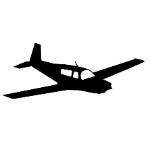How strong is the M20 wing?
-
Members Online
- joemoriss
- JetAlanY
- bluehighwayflyer
- ElkoRandy20J
- AspiringOwner
- Brian2034
- gwav8or
- zehutiman
- MooneyMurph
- Mel
- Utah20Gflyer
- rahill
- Endre Holen
- caractacuspdoom
- Aaviationist
- AndreiC
- jetdriven
- PeytonM
- Hradec
- Jakes Simmons
- PT20J
- Marc_B
- Flyler
- jcovington
- N201MKTurbo
- Kirch56H
- 1980Mooney
- DRH4249
- christaylor302
- Shadrach
- DCarlton
- Sabremech
- mpilot
- 00-Negative
- Taylor 203
- Gorosave
- LANCECASPER
- Planegary
- 47U
- Deb
- Mark210
- MatthiasArnold
- ad5ut
- ttflyer
- DXB
- jeremyc209
- takair
- Schllc
- exM20K


Recommended Posts